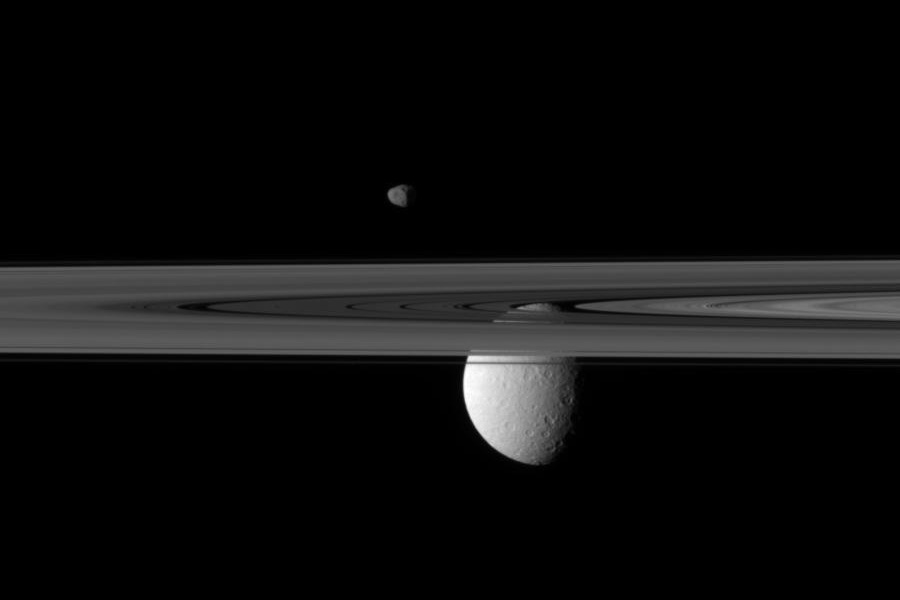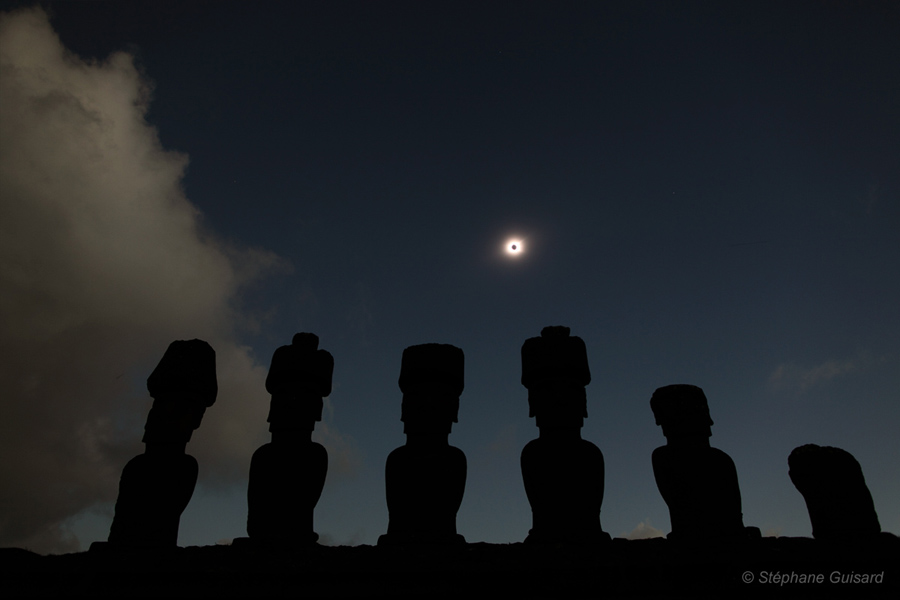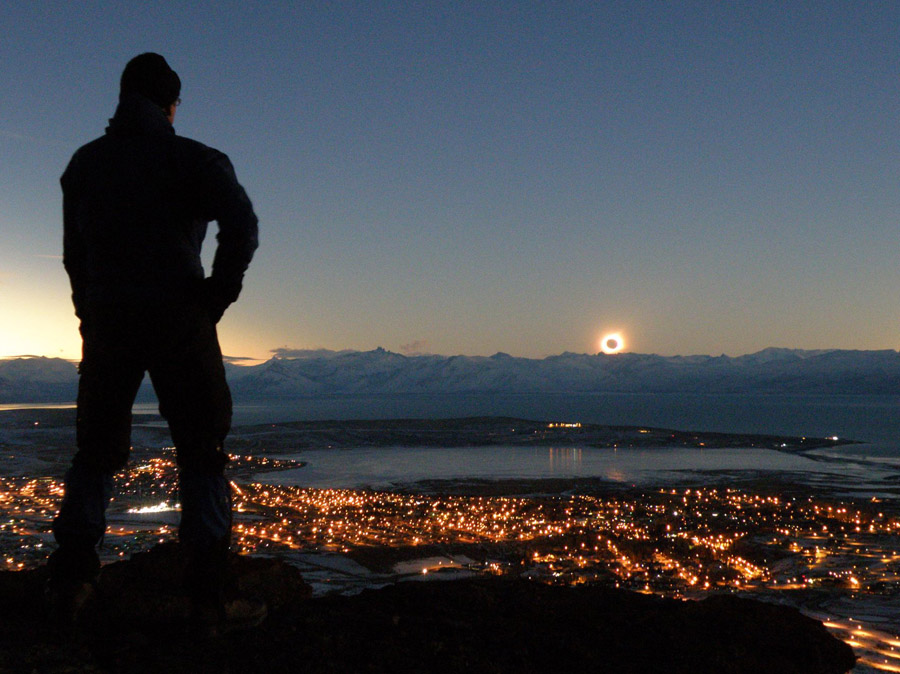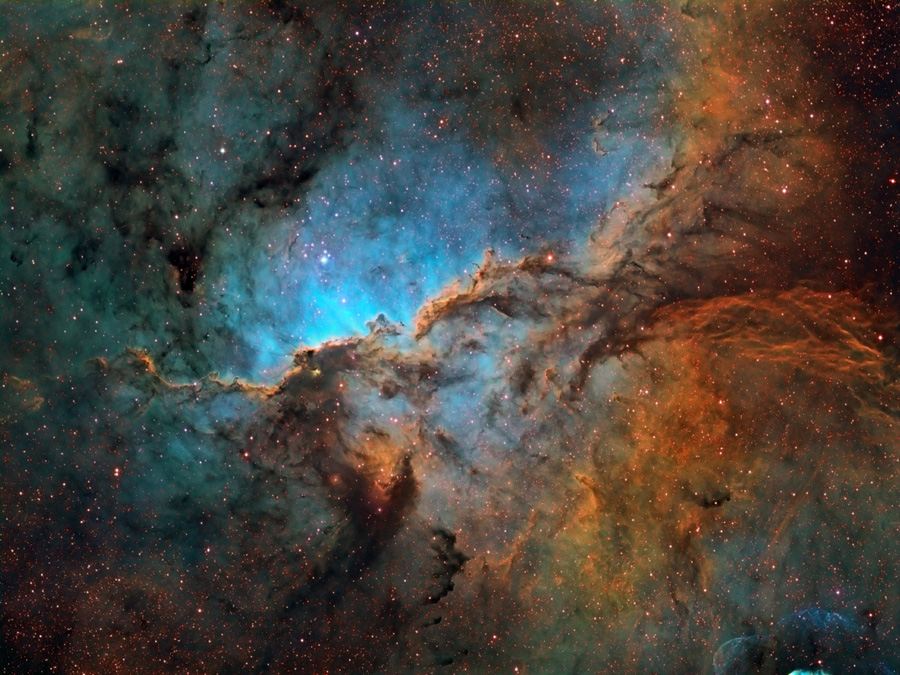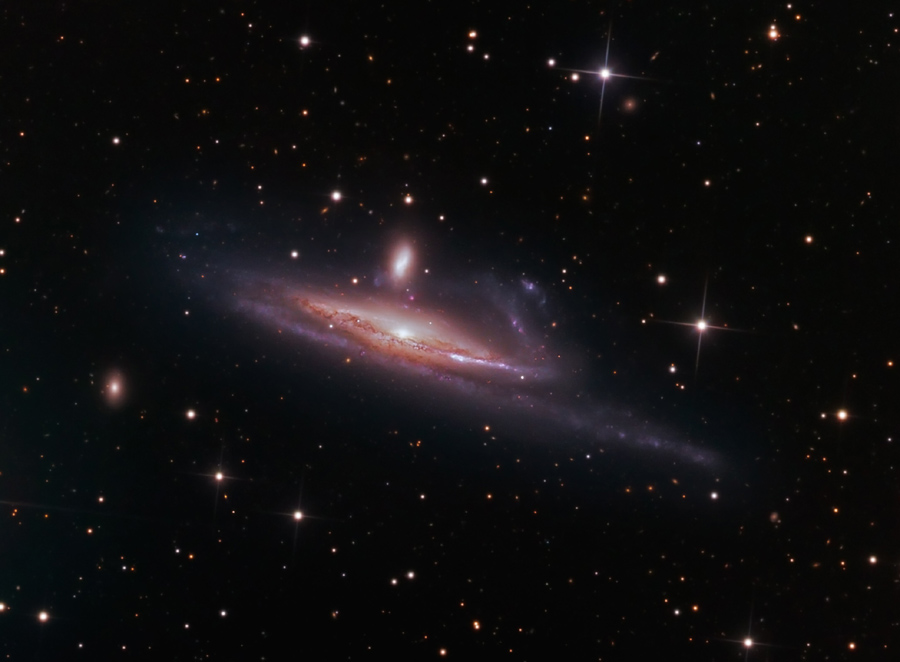______________________________________________________
Please vote (once) for the two best Astronomy Pictures of the Day (image and text) of July 11 - July 17.
(Repeated APODs are not included in the poll.)
All titles are clickable and link to the original APOD page.
We ask for your help in choosing an APOW, as this helps Jerry and Robert create "year in APOD images" review lectures, creates APOM polls that can be used to create a free PDF calendar at year's end, and provides feedback on which images and APODs were relatively well received. For these polls to be helpful, we ask that you vote only once; you can make two choices and you can change your vote if you'd like, but please do not vote repeatedly for your favorite image(s), as that skews the results and makes the information much less useful to APOD.
Thank you!
______________________________________________________
<- Previous week's poll
What's happened to that moon of Saturn? Nothing -- Saturn's moon Rhea is just partly hidden behind Saturn's rings. In April, the robotic Cassini spacecraft now orbiting Saturn took this narrow-angle view looking across the Solar System's most famous rings. Rings visible in the foreground include the thin F ring on the outside and the much wider A and B rings just interior to it. Although it seems to be hovering over the rings, Saturn's moon Janus is actually far behind them. Janus is one of Saturn's smaller moons and measures only about 180 kilometers across. Farther out from the camera is the heavily cratered Rhea, a much larger moon measuring 1,500 kilometers across. The top of Rhea is visible only through gaps in the rings. The Cassini mission around Saturn has been extended to 2017 to better study the complex planetary system as its season changes from equinox to solstice.
Welcome to Planet Earth, the third planet from a star named the Sun. The Earth is shaped like a sphere and composed mostly of rock. Over 70 percent of the Earth's surface is water. The planet has a relatively thin atmosphere composed mostly of nitrogen and oxygen. This picture of Earth, dubbed Blue Marble, was taken from Apollo 17 in 1972 and features Africa and Antarctica. It is thought to be one of the most widely distributed photographs of any kind. Here, the world famous image has been recast as a spectacular photomosaic using over 5,000 archived images of Earth and space. With its abundance of liquid water, Earth supports a large variety of life forms, including potentially intelligent species such as dolphins and humans. Please enjoy your stay on Planet Earth.
Makemake, a god in Easter Island mythology, may have smiled for a moment as clouds parted long enough to reveal this glimpse of July 11's total solar eclipse to skygazers. In the foreground of the dramatic scene, the island's famous large, monolithic statues (Moai) share a beachside view of the shimmering solar corona and the darkened daytime sky. Other opportunities to see the total phase of this eclipse of the Sun were also hard to come by. Defined by the dark part of the Moon's shadow, the path of totality tracked eastward across the southern Pacific Ocean, only making significant landfall at Mangaia (Cook Islands) and Easter Island (Isla de Pascua), ending shortly after reaching southern Chile and Argentina. But a partial eclipse phase could be enjoyed over a broader region, including many southern Pacific islands and wide swath of South America.
On July 11, after a long trek eastward across the southern Pacific Ocean, the Moon's shadow reached landfall in South America. In a total solar eclipse close to sunset, silhouetted Moon and Sun hugged the western horizon, seen here above the Andes mountains near the continent's southern tip. To enjoy a good vantage point, the photographer hiked to a windy spot about 400 meters above a lake, Lago Argentino, climbing into the picture after setting up his camera on a tripod. At left, the sky outside the shadow cone is still bright. Below, the lights of El Calafate, Patagonia, Argentina, shine by the lake shore.
Dark shapes with bright edges winging their way through dusty NGC 6188 are tens of light-years long. The emission nebula is found near the edge of an otherwise dark large molecular cloud in the southern constellation Ara, about 4,000 light-years away. Formed in that region only a few million years ago, the massive young stars of the embedded Ara OB1 association sculpt the fantastic shapes and power the nebular glow with stellar winds and intense ultraviolet radiation. The recent star formation itself was likely triggered by winds and supernova explosions, from previous generations of massive stars, that swept up and compressed the molecular gas. A false-color Hubble palette was used to create the this sharp close-up image and shows emission from sulfur, hydrogen, and oxygen atoms in red, green, and blue hues. At the estimated distance of NGC 6188, the picture spans about 200 light-years. .
Large galaxies grow by eating small ones. Even our own galaxy practices galactic cannibalism, absorbing small galaxies that get too close and are captured by the Milky Way's gravity. In fact, the practice is common in the universe and illustrated by this striking pair of interacting galaxies from the banks of the southern constellation Eridanus (The River). Located over 50 million light years away, the large, distorted spiral NGC 1532 is seen locked in a gravitational struggle with dwarf galaxy NGC 1531, a struggle the smaller galaxy will eventually lose. Seen edge-on, spiral NGC 1532 spans about 100,000 light-years. Nicely detailed in this sharp image, the NGC 1532/1531 pair is thought to be similar to the well-studied system of face-on spiral and small companion known as M51.
<- Previous week's poll
Poll: Astronomy Picture of the Week for July 11-17
Poll: Astronomy Picture of the Week for July 11-17
A closed mouth gathers no foot.
-
ruprecht147
- Ensign
- Posts: 16
- Joined: Tue Jun 29, 2010 8:12 pm
Re: Poll: Astronomy Picture of the Week for July 11-17
My two choices were Galaxies in the River - which includes one of the best almost-edge-on views of a distorted spiral galaxy I've ever seen - and the Easter Island eclipse - because for me that image is just inherently mind-boggling, and APOD is my supreme go-to source for mind-boggles.
As Iain Banks points out in his most recent novel, Transitions, our dear planet must represent a vanishingly rare environment in the Milky Way Galaxy, because its surface provides regular views of total Solar eclipses. As we know from exoplanet searches and numerical modeling, planet-moon systems like Earth-Luna are rare in and of themselves, and the fact that our Moon's shadow *exactly* covers the visible disk of the Sun is a serendipity of truly cosmic proportions. Add to that the fact that total eclipses are infrequently visible from Isla de Pascuas, as well as the fact that the island's environment was able to support a civilization capable of constructing enormous monuments like the moai for only a brief span of time, and you've got serendipity cubed. Or something of that order.
Then again, those Saturnian rings and moons -- a really, truly gorgeous image! Though probably nowhere near as rare, Galactically speaking, as a total Solar eclipse visible above a row of monumental art objects. Thank you AGAIN, APOD!!!
As Iain Banks points out in his most recent novel, Transitions, our dear planet must represent a vanishingly rare environment in the Milky Way Galaxy, because its surface provides regular views of total Solar eclipses. As we know from exoplanet searches and numerical modeling, planet-moon systems like Earth-Luna are rare in and of themselves, and the fact that our Moon's shadow *exactly* covers the visible disk of the Sun is a serendipity of truly cosmic proportions. Add to that the fact that total eclipses are infrequently visible from Isla de Pascuas, as well as the fact that the island's environment was able to support a civilization capable of constructing enormous monuments like the moai for only a brief span of time, and you've got serendipity cubed. Or something of that order.
Then again, those Saturnian rings and moons -- a really, truly gorgeous image! Though probably nowhere near as rare, Galactically speaking, as a total Solar eclipse visible above a row of monumental art objects. Thank you AGAIN, APOD!!!
Re: Poll: Astronomy Picture of the Week for July 11-17
ruprecht147, thank you for saying why you selected what you selected! It's always interesting to read what different images invoke/mean to others.
As is usual for me, I like all the images!! Oh, that I could vote for them all! But I cannot. I must leave behind the mosaic of our blue marble, though it pains me to do so, and the eclipse images, which are fantastic for all the reasons you mention, and even the galaxies in the river, as intriguing as the image is. The image of the Saturnian moons and rings made me gasp when I saw it, gape open-mouthed at the screen, and eventually, even tear up a wee bit... Aesthetically, it is beautiful in its simplicity: brighter and darker greys, partially-lit orbs, central dividing lanes. Such a little bit to look at, so pleasingly arranged. But to realize that this, this is out there and has been unknown for so long, and that I get to see this! These! THAT! Oh! I still gasp, still gape!
The image of NGC 6188 got my other vote. It is also aesthetically pleasing, in a completely different way than the Saturnian moons/rings, powerful in its colors, fantastical in its shapes, but for me, the textures, the curtaining, the shadows and depth the image shows are what compelled me to select it. It is gorgeous and full and has so many things in it!
As is usual for me, I like all the images!! Oh, that I could vote for them all! But I cannot. I must leave behind the mosaic of our blue marble, though it pains me to do so, and the eclipse images, which are fantastic for all the reasons you mention, and even the galaxies in the river, as intriguing as the image is. The image of the Saturnian moons and rings made me gasp when I saw it, gape open-mouthed at the screen, and eventually, even tear up a wee bit... Aesthetically, it is beautiful in its simplicity: brighter and darker greys, partially-lit orbs, central dividing lanes. Such a little bit to look at, so pleasingly arranged. But to realize that this, this is out there and has been unknown for so long, and that I get to see this! These! THAT! Oh! I still gasp, still gape!
The image of NGC 6188 got my other vote. It is also aesthetically pleasing, in a completely different way than the Saturnian moons/rings, powerful in its colors, fantastical in its shapes, but for me, the textures, the curtaining, the shadows and depth the image shows are what compelled me to select it. It is gorgeous and full and has so many things in it!
A closed mouth gathers no foot.
